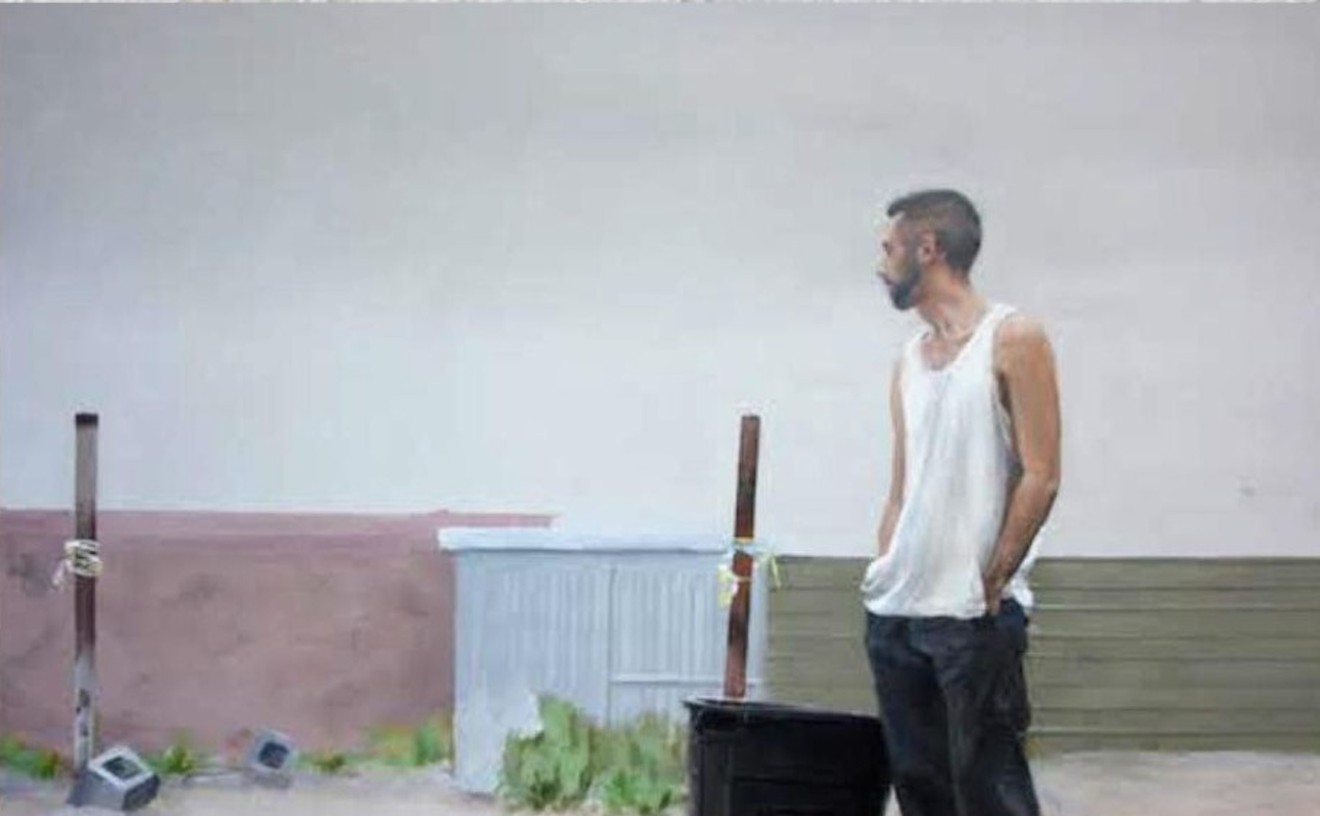Cortes reported the ancient Aztec capital, Tenochtitlan--now Mexico City--to be filled with "large and beautiful houses." The houses had "very pleasant gardens," upstairs and down. And the people lived "almost like those in Spain." Astounding, given they were "barbarous," and cut off from "civilized nations" and "the knowledge of God."
Thirty-four years later, from Cuzco, the Inca capital of Peru, Pedro de Cieza de Leon filed much the same report. "For Cuzco . . . was another Rome," he wrote, "and the one city may well be compared with the other."
"Converging Cultures: Art and Identity in Spanish America," organized by Brooklyn Museum and now at Phoenix Art Museum, indicates just how far from the adage "When in Rome do as the Romans" the Spaniards strayed during their 300-year tour of the Americas.
The show's objects are reports from the colonial front, showing how the Spaniards commandeered the rich, indigenous Inca and Aztec cultures, and made the local artists and craftsmen do as the Spaniards did.
The Spaniards imported slaves from Africa. They introduced mechanical printing on paper and painting with oils on canvas, copper, stone and leather. They showed silk lace and treadle looms to the already accomplished Incan weavers of the Andes, who purportedly adored the finery and began using its motifs in their own weavings.
They tutored the masterful Aztec potters to make Spanish knockoffs out of Mexican clay. They brought in horses, which added stirrups and a gamut of horse gear to the inventory of local leather and metal shops. They brought in sheep, which led to wool. They imported the hierarchies of Spanish society--different, but no less maddening than those already entrenched in native culture. Above all, they brought in Jesus Christ and drilled the locals on how to fill their lives and art with Him and His extended family.
Our intrigue with all things colonial usually focuses on how the native view creeps in and mutates the invaders' ideas into hybrids. As the show's curators and its catalogue contributors point out, few of the seeds the Spaniards planted in the New World grew anything approximating European purity.
The show's array of household items--chairs, tables, cabinets, cups, bowls, carpets and clothing--paintings and sculpture exemplifies the adaptations local artists and artisans made to the forms imposed upon them. They rarely improved upon the native originals.
The wooden cups, for example, known as keros, were derived from European beakers, yet decorated with scenes that merged colonial and Incan themes. Beautiful Incan cups had predated the conquest, but they were typically done in stone and metal.
New forms often brought about such changes in the use of materials. One of the more interesting examples is a glazed Mexican blue-and-white ceramic basin attributed to 18th-century Mexico. It stands out because its almost comical amalgam of influences stretches from Mexico to Spain to Arabia and China. Prior to the conquest, Mexican pottery was unglazed. Sometimes it was decorated with pigments and burnished to give the surface a gloss. But there was absolutely nothing in its tradition like this basin. In fact, the Spaniards had lifted the form and coloring from renowned Chinese blue-and-white ceramics. They had rendered the Chinese blue-and-white in the majolica glaze they had learned from the Moors, and then passed this convoluted bundle of mannerisms on to a Mexican artisan who packaged it into a bowl holding a scene of the local terrain.
By far, the show's most compelling images are the native interpretations and re-imaginations of Christianity.
As Aztec and Inca gods were shoved aside by saints and apostles, some extraordinary inventions occurred.
The stories of Christ and the Holy Family were much the same as those being rendered by Spaniards of the day. But as time wore on, such big themes as the "betrothal of Mary and Joseph," "triumph of Christ," "Nativity," "flight into Egypt," "Holy Trinity" or "the carpenter's shop at Nazareth" all became local. In "Saint Joseph and the Christ Child," a Cuzco painter shows the Child walking in Incan sandals. Elsewhere He appears in indigenous garments.
And throughout the Americas, images and stories proliferate about the Virgin coming--as followers believe the Virgin of Guadalupe did--as apparitions in the local hills.
These stories and images revealed the progress Spanish power and Christianity were making in the local mind, because they reflected not just how the stories were being told, but how they were being felt.
Few works in the show are more explicit about that than the crucifixes. One Mexican example from the late 1800s shows Christ's wounds and pain in almost forensic detail--his chest is slit and oozing; the skin on his knees is peeled back, bone exposed. This is no ordinary rendering of the Savior, but a full-fledged admission that the sculpture's maker understood the pain and suffering the image portrays.
The wonder of this show is that it makes the mayhem of colonial suffering seem more like cheery corporate expansions into new foreign markets.
Cultural convergence has such a friendly ring--as if the hymns the Spanish conquistadors and missionaries sang were the forerunners of the jingles and ads that McDonald's, Fuji Film, Sony, Lancome, BMW and Levi's now run, at all hours of the day, much farther from home than the Spaniards ever sailed.
What lovely progress we've made.
"Converging Cultures: Art and Identity in Spanish America" continues through Sunday, February 23, at Phoenix Art Museum, 1625 North Central. For more details, see Art Exhibits listing in Thrills.










